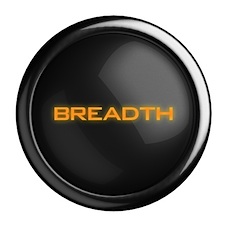 Today’s stock market plunge raises the prospect of buying when the crowd is panicking. I’m not ready to make any broader comments about the current market outlook. But here are some numbers for swing traders to consider if the market and market breadth figures stay down as we near the close this afternoon.
Today’s stock market plunge raises the prospect of buying when the crowd is panicking. I’m not ready to make any broader comments about the current market outlook. But here are some numbers for swing traders to consider if the market and market breadth figures stay down as we near the close this afternoon.
I did a market breadth & timing study based on the following strategy: buy the S&P 500 Depository Receipts ETF (SPY) at the closing price one day after the S&P 500 daily advance/decline line (advancing issues minus declining issues for one day; not the cumulative total) drops below -400; sell at the close three days later. The time period for the study was March 9, 2009 (the start of the current primary uptrend) to the present. Here are the results, based on a total of 80 instances.
The percent profitable was 59%. That’s not great if the average dollar amount of gains and losses were about the same. But it’s not bad if gains were bigger than losses. If you exclude all winning and losing trades that were more than three standard deviations from the mean (outliers), the profit factor was 2.15. That means, net, the amount made on winning trades was a little more than twice what was lost on losing trades. What’s also heartening in the results is that the largest winning trade only accounted for 6.16% of the gross profit. That means net profit was not largely derived from a few big winners.
Keep in mind, trading automated strategies generally only work for you over a larger number of trades. And drawdowns do occur. So I’m not suggesting you buy blindly based on this study. I present it here for those who may find it insightful as an addendum to their own trading tactics, particularly swing traders who look to position for the next reversal in the market. Consider the event risk of holding over the weekend – critical right now given what’s going on in Ukraine and Israel. If you do choose to go long or add, I’d advise a relatively small position size and hard exit rules. Volatility is high (I’m sure most of you are watching the spike in the CBOE Market Volatility Index – the VIX), which means risk is too. Happy trading, everyone.
No position in any of the mentioned securities at the time of publication. Any opinions expressed herein are solely those of the author, and do not in any way represent the views or opinions of any other person or entity.







